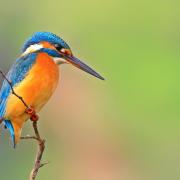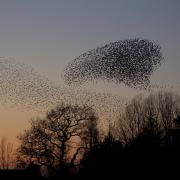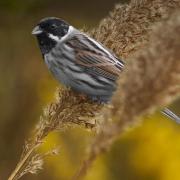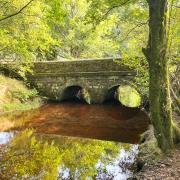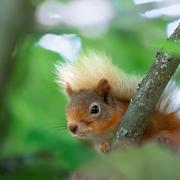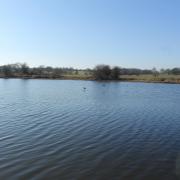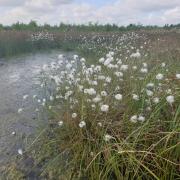Spring is not too far off and that’s the time when the birds start getting noisier in our woodlands. The Lancashire Wildlife Trust’s Alan Wright investigates a couple of the stars of the Dawn Chorus.

There is something really special about seeing a thrush sitting on a stone garden post as you wander along a country lane and winter begins to vanish behind you.
Like most birds, you will probably hear the song thrush more than you see it with its beautiful, repeating song bounding out of the trees as they start showing signs of greenery.
I spotted one sitting on the post of Brinscall Hall last year, singing its heart out and probably making the relaxation of the yoga group inside the hall a lot easier. These birds often scoot around the woods at Wheelton Plantation, near Chorley.
And at Mere Sands Wood, our nature reserve in Rufford, thrush numbers have climbed as our staff and volunteers have happily coppiced the woodland. Since late summer they have worked their way through the scrub to leave room for more winter berries.
This involved the planting thousands of hawthorns and blackthorns in a hedgerow ringing the site. Coppicing and pruning rowans have helped to stimulate berry production. Then the gang planted hundreds of new rowans, crab apples and holly.
Areas of standing dead wood, log piles and dead hedges are havens for insects and grubs providing food for the birds. Clearing rhododendron or bramble allows herbaceous vegetation to grow and this harbours slugs, snails and caterpillars.

The song thrush is a songbird, commonly found in parks and gardens, woodland and scrub. While some of the thrush family you will have seen over winter are from colder countries, the majority are resident in Lancashire.
According to the Lancashire Bird Atlas, song thrushes have enjoyed a small resurgence in the 21st century. Records show that there are an estimated 6,000 pairs in the county.
The song thrush is a familiar bird, brown above, with a white belly covered in black, drop-shaped spots. It is smaller and a warmer brown than the mistle thrush.
The mistle thrush got its name from its love of mistletoe. It enjoys the sticky berries and will guard a berry-laden tree from any would-be thieves. It also helps mistletoe to thrive by wiping its bill on the tree bark to remove sticky residue and accidentally planting the seeds.
It is pale greyish-brown above, with a white belly covered in round, black spots. Numbers in the region have remained stable with many breeding in urban parts of Merseyside.
Farmland birds like the redwing and fieldfare are members of the thrush family, you will see them in local fields in large flocks particularly in winter.

The redwing is a small thrush which visits the UK in the winter to feast on berry-laden bushes in hedgerows, woodland, parks and gardens. You can hear them on clear evenings with their ‘tseep’ call overhead.
They are dark brown above and white below, with a black-streaked breast and orange-red flanks and underwing. Redwings have a very smart face pattern, with a white eyebrow stripe and dark brown cheeks. They often mix in groups with the fieldfare, another winter visitor, and these groups can be as big as 200 as they raid fields for food.
The fieldfare, which visits the UK in winter, is large with a chestnut-brown back, and yellowy breast streaked with black, a black tail, dark wings and pale grey rump and head. You may be lucky enough to see them in your garden if there is snow on the ground and food is scarce.
Our most common thrush is the blackbird, seen in most gardens. Its song will be one of the first you hear on a spring morning. The warmer weather is just around the corner.
My nature moment
As Volunteer Co-ordinator at The Wildlife Trust for Lancashire, Manchester and North Merseyside Catherine Haddon has many nature moments while she is out and about.
Her most recent? Catherine said: ‘I was arriving at Mere Sands Wood for the Big Badgers Day Out (for our children’s Watch clubs) when a beautiful thrush flew along in front of my car as though it was leading the way to the reserve.’
Catherine added: ‘I have the wonderful job of talking to lots of lovely people who are keen to give some of their time to The Wildlife Trust. It is fantastic to be able to help people to find volunteering opportunities that enable them to not only improve their lives but make a difference for our wildlife too.’
There are so many benefits attached to volunteering from the feel good factor of doing something worthwhile to making new friends and being part of a team. If you are interested in volunteering for the Wildlife Trust go to www.lancswt.org.uk/volunteer or call Catherine on 01772 324129.












